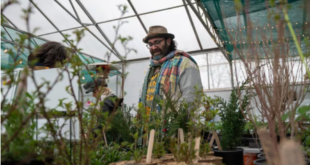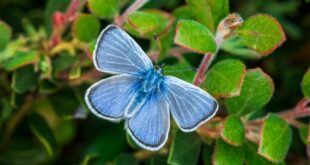Saskatoon resident Pooja Bansal had to rip some plants from her garden.

A Saskatoon resident thought it was a good idea to replace her front lawn with a pollinator garden, which she calls a more environmentally friendly alternative, but the city wasn’t on board with her plans.
Pooja Bansal had to pull some plants from her front yard garden after city officials said they did not comply with city bylaws regarding their heights. Bansal is questioning the bylaws, saying the transformation has only changed her garden for the good.
“[Previously] it wasn’t giving back to the community, not creating biodiversity, and also used a lot of pesticides to kill native plants and species. So we wanted to give back and increase that biodiversity.”
A pollinator garden is one with a variety of plants attractive to butterflies, bees and other pollinators. As a part of the switch, Bansal has planted some 120 new plants in her front lawn and she hopes to double that number.
She said her garden has saved water and attracted more bees.
Then city officials showed up at her front door and asked her to trim some plants.
“I was really surprised because [the officer] came back two to three times to check whether we had cut it down. He was using his time to actually monitor the weeds and the growth,” she said.

The city’s bylaw on Property Maintenance and Nuisance Abatement dictates that land is not to be overgrown with grass and weeds in excess of 20 centimetres.
In addition, the provincial Weed Control Act empowers municipalities to enforce the eradication, containment or control of prohibited, noxious and nuisance weeds.

This woman ditched her front lawn for a pollinator garden. While it got her plenty of buzz it also got her into trouble
Pooja Bansal created a haven in her front yard for dragonflies, butterflies and other little creatures. She hired two landscape designers and planted over 120 plants but what she did not expect was a Saskatoon city official to come by and tell her she had to rip out a lot of the native grass and weeds because they didn’t comply with the city bylaw.
However, the laws have an exception: intentionally planted vegetation such as shrubs, perennials or a vegetable garden are not considered a violation, even if the height exceeds the limit.
Pollinator Paradise YXE is a group working to bring back native plants and wildlife to Saskatoon under a project called Wild About Saskatoon. In the last two years, it has managed to register more than a hundred pollinator gardens in the city.
Candace Savage, chair of Wild About Saskatoon, says her community members haven’t run into this kind of a problem yet, but that pollinator gardens might attract attention because of how they look.
Savage said it’s important to start slow and accommodate neighbours.
“It’s important to make your intentions clear because your garden, especially if it’s in the front yard, is going to look a little different than what people are used to.”
Bansal said plants in her garden were not overgrown weeds, but planned cultivation. When they were not trimmed they were helping the ecosystem by encouraging native species of butterflies, moths, dragonflies, grasshoppers to come and feed, she said.
“It’s very important to keep them for the winter, because the seeds from it are food for the birds. We reluctantly had to cut it down,” she said.
The work involved ripping out most of her native grass. Bansal said there’s now bare soil spilling onto the sidewalk because there’s nothing to hold it together anymore.

Bansal calls the process of sustaining a pollinator garden a marathon and not a sprint.
She said the city could do a lot more with meaningful conversations around biodiversity.
“I would definitely like to see a change in bylaws for the city to take an intentional approach to create biodiversity, and not encourage just mindless lawns that have become a symbol of status and prestige.”
Met Grazier, Saskatoon’s director of community standards, said in a statement that the city is not able to comment on the specifics of Bansal’s case.
In general, when a complaint comes in, the city’s bylaw compliance section works with the resident to come to an agreement, Grazier said.
Bansal has complied with the directive, but that hasn’t necessarily meant giving up on her goal of creating a pollinator garden.
“We will continue doing our part in creating a pollinator garden and hope everyone else or some people join the movement to create more biodiversity in the city. It’s so exciting to see a highway of bees and birds and rabbits taking refuge in our front yard.”
ABOUT THE AUTHOR

Journalist
Based in Regina, Shlok Talati is a reporter with CBC Saskatchewan. Talati joined CBC News as a Donaldson Scholar in 2023. He has since worked with The World This Hour, CBC Toronto’s digital desk, and CBC Sask. He holds a master of journalism from the University of King’s College, Halifax. You can reach him at shlok.talati@cbc.ca
With files from Saskatoon Morning
*****
Credit belongs to : www.cbc.ca
 Atin Ito First Filipino Community Newspaper in Ontario
Atin Ito First Filipino Community Newspaper in Ontario






